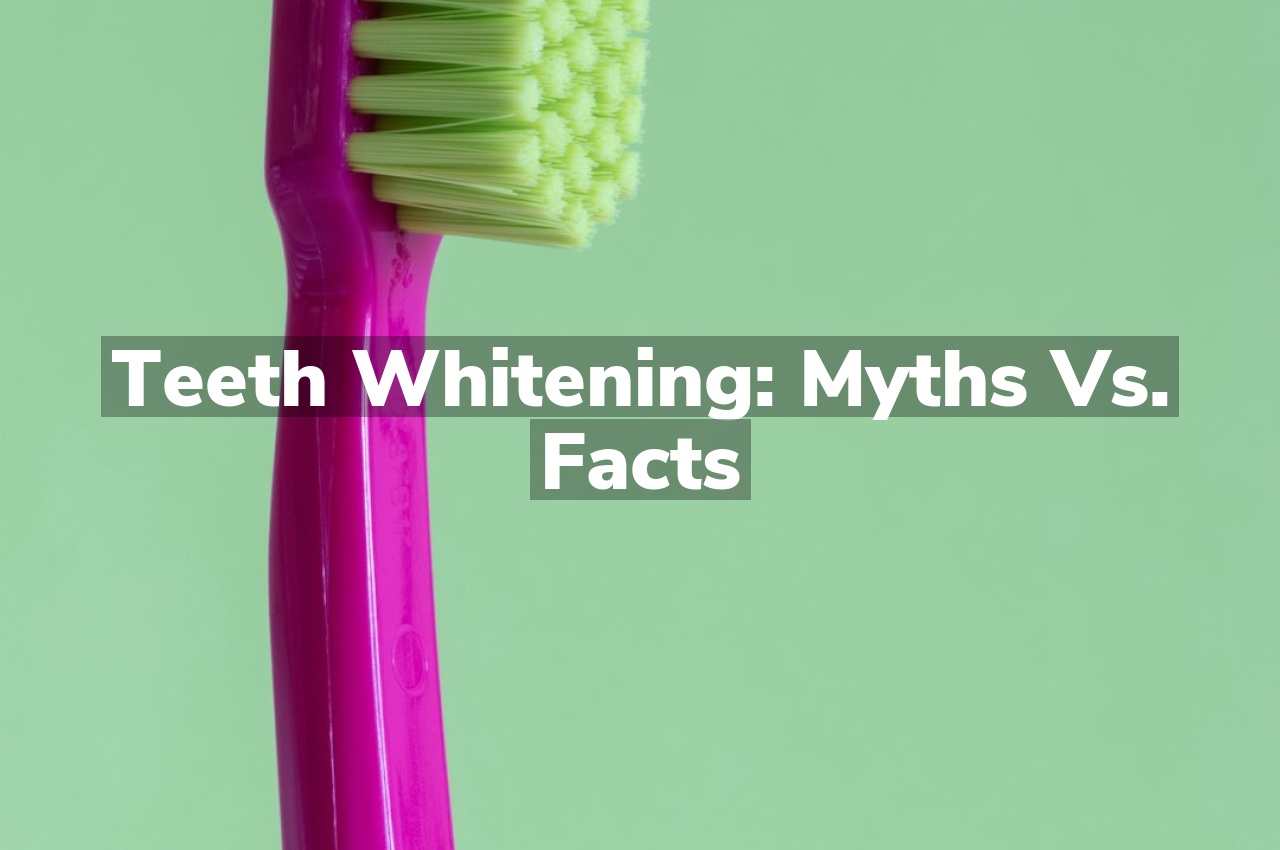Are you struggling to separate truth from fiction in the world of teeth whitening? This post aims to dispel common myths and present the facts, helping you understand what really works in achieving a brighter smile without endorsing specific products or methods.
Common Misconceptions About Teeth Whitening
Teeth whitening is a topic surrounded by numerous myths that can often lead to confusion about its safety and effectiveness. One widespread misconception is that teeth whitening damages enamel, leading to increased sensitivity and tooth decay. However, when conducted properly, teeth whitening is a safe procedure that does not harm the tooth enamel. Understanding the The Science Behind Teeth Discoloration can provide insight into why teeth change color and how whitening processes work to reverse these effects without damaging the teeth.
Another common myth is that all teeth will achieve a brilliant shade of white after a single whitening session. The reality is that individual results vary greatly due to factors such as the original color of the teeth, the type of staining, and the whitening method used. It’s important to have realistic expectations and understand that achieving the desired shade may require multiple sessions. This highlights the importance of professional guidance in the teeth whitening process to ensure safety and effectiveness.
The Truth Behind Whitening Sensitivity
Teeth whitening has become a popular method for achieving a brighter smile, but it’s often accompanied by concerns about sensitivity. A common myth is that teeth whitening inevitably leads to increased sensitivity. However, the reality is more nuanced. Sensitivity after teeth whitening can vary greatly among individuals, and not everyone experiences it. The sensation typically described as sensitivity is often temporary and can depend on several factors, including the condition of one’s teeth and gums prior to whitening.
Understanding the causes and nature of sensitivity related to teeth whitening is crucial for anyone considering this cosmetic procedure. It’s important to differentiate between myths and facts to set realistic expectations. While some might experience temporary discomfort, many find that the aesthetic benefits outweigh this temporary inconvenience. For those interested in exploring teeth whitening options, Brighten Your Smile in Columbia with Teeth Whitening could be a starting point to learn more about the process and its potential impact on dental sensitivity.
Natural Color vs. Whitening Expectations
When considering teeth whitening, it’s crucial to understand the difference between the natural color of your teeth and the expectations you might have for whitening results. Teeth naturally come in a range of shades, and not everyone’s teeth can achieve a bright white color through whitening procedures. The natural color of your teeth is determined by the dentin underneath the enamel, and factors such as genetics, age, and certain habits can affect this color. It’s important to have realistic expectations when considering teeth whitening, recognizing that results can vary widely from person to person.
Duration of Whitening Effects Debunked
One common myth surrounding teeth whitening is the belief that the effects last indefinitely. However, the reality is that the duration of teeth whitening effects can vary significantly based on several factors, including dietary habits, oral hygiene practices, and individual tooth composition. Generally, the brightness achieved from a whitening procedure isn’t permanent and may require maintenance to preserve the desired level of whiteness. Understanding this can help set realistic expectations for those considering teeth whitening options. For more information on maintaining your smile, consider reaching out to Dental Care of Rosewood, your trusted Columbia Dentist.
Impact of Diet on Whitening Results
The foods and beverages we consume play a significant role in the coloration and overall health of our teeth. Certain items in our diet, especially those with intense color pigments like coffee, tea, red wine, and some fruits and vegetables, can lead to staining over time. These stains can affect the outermost layer of the tooth, making it challenging to achieve or maintain desired whitening results. Conversely, a diet that limits exposure to such staining agents can potentially influence the longevity and effectiveness of teeth whitening outcomes. Understanding the relationship between diet and teeth coloration is crucial for anyone considering teeth whitening options.
Conclusion
For more insights, read reviews on Google Maps or call us at 803-810-1416 to discuss further.

